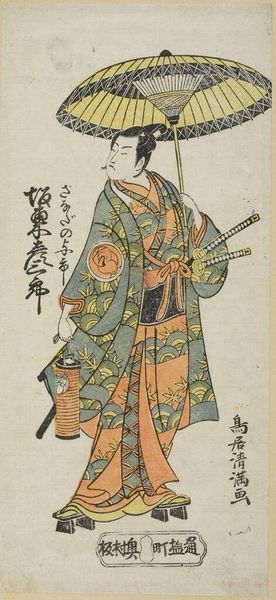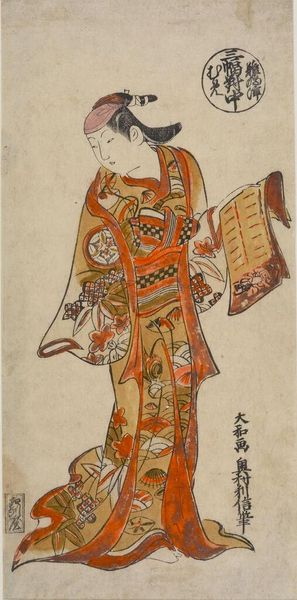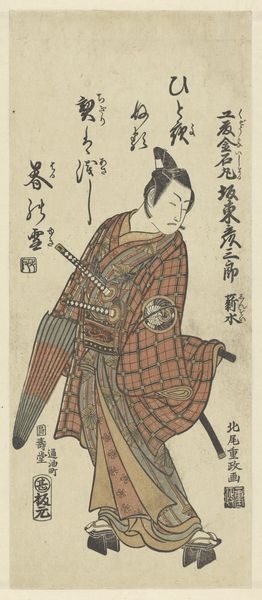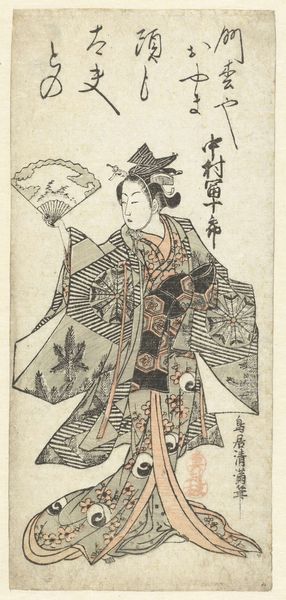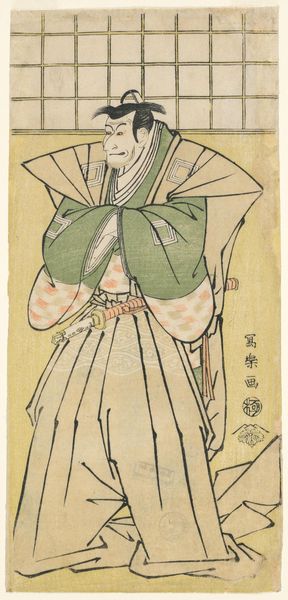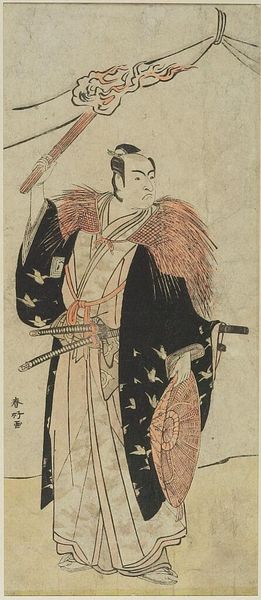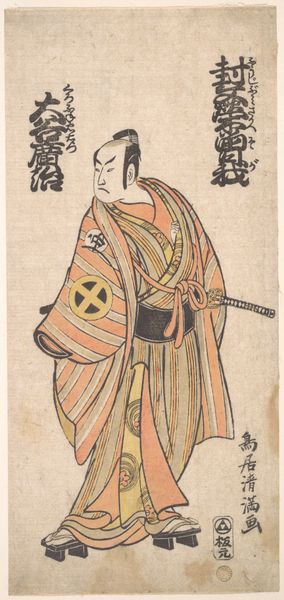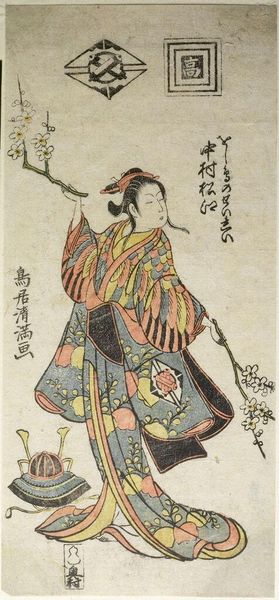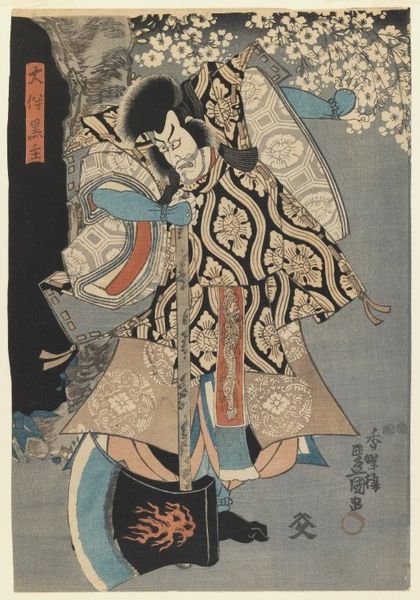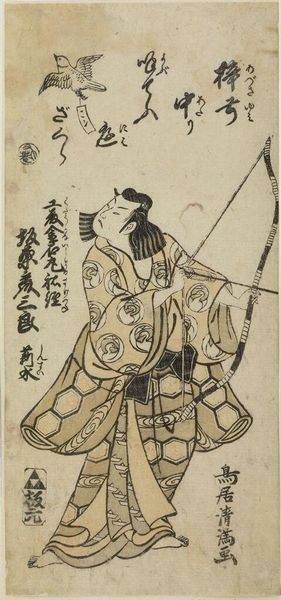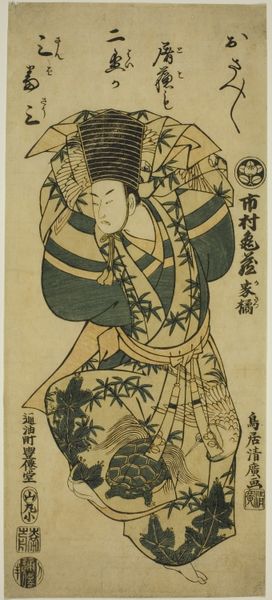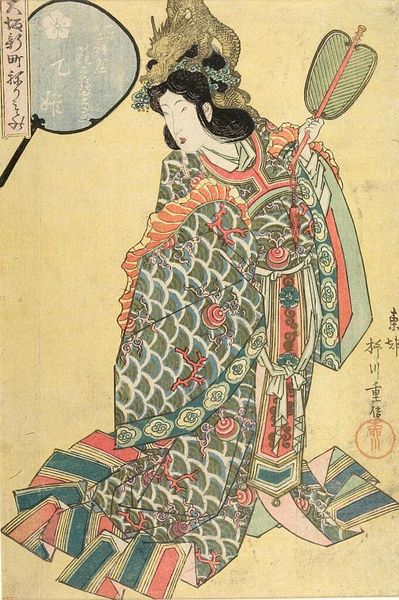
Actor Onoe KikugorÅ as Soga no TarÅ Sukenobu, in the play "Ume-ya Suisen Izu no Irifune" at the Morita Theater, 1763 c. 1763
0:00
0:00
Dimensions: Paper: H. 37.0 cm x W. 17.2 cm (14 9/16 x 6 3/4 in.)
Copyright: CC0 1.0
Curator: I'm immediately struck by the actor's defiant stance—a symbol of power, yes, but also of vulnerability, given the historical context of Kabuki actors and their precarious social standing. Editor: And those eyes on his robe! It is an astonishing print by Torii Kiyomitsu, created in 1763. Curator: Yes, the gaze is unsettling, almost omniscient, and the swirling patterns create a sense of unease, echoing the societal currents of the time. It makes me think of gender roles and marginalized identities. Editor: Those eyes, a recurring motif, feel like watchful spirits, linking performance with ancient beliefs and the power of the mask to reveal hidden truths. The fan itself is a form of symbolic communication. Curator: Absolutely! The fan, here, isn’t just a prop. It becomes a site of coded gestures, laden with social and political meaning—a form of resistance. Editor: Thinking about that tension between the seen and unseen, I feel drawn to how Kiyomitsu captures the emotional depth of the actor's craft—the performer embodying Soga no Taro. Curator: Indeed, it's fascinating to consider how this performance, captured in print, becomes a mirror reflecting society's anxieties and aspirations. Editor: And those artistic choices solidify the figure's iconic presence, giving viewers an impression that lasts far beyond the performance.
Comments
No comments
Be the first to comment and join the conversation on the ultimate creative platform.
